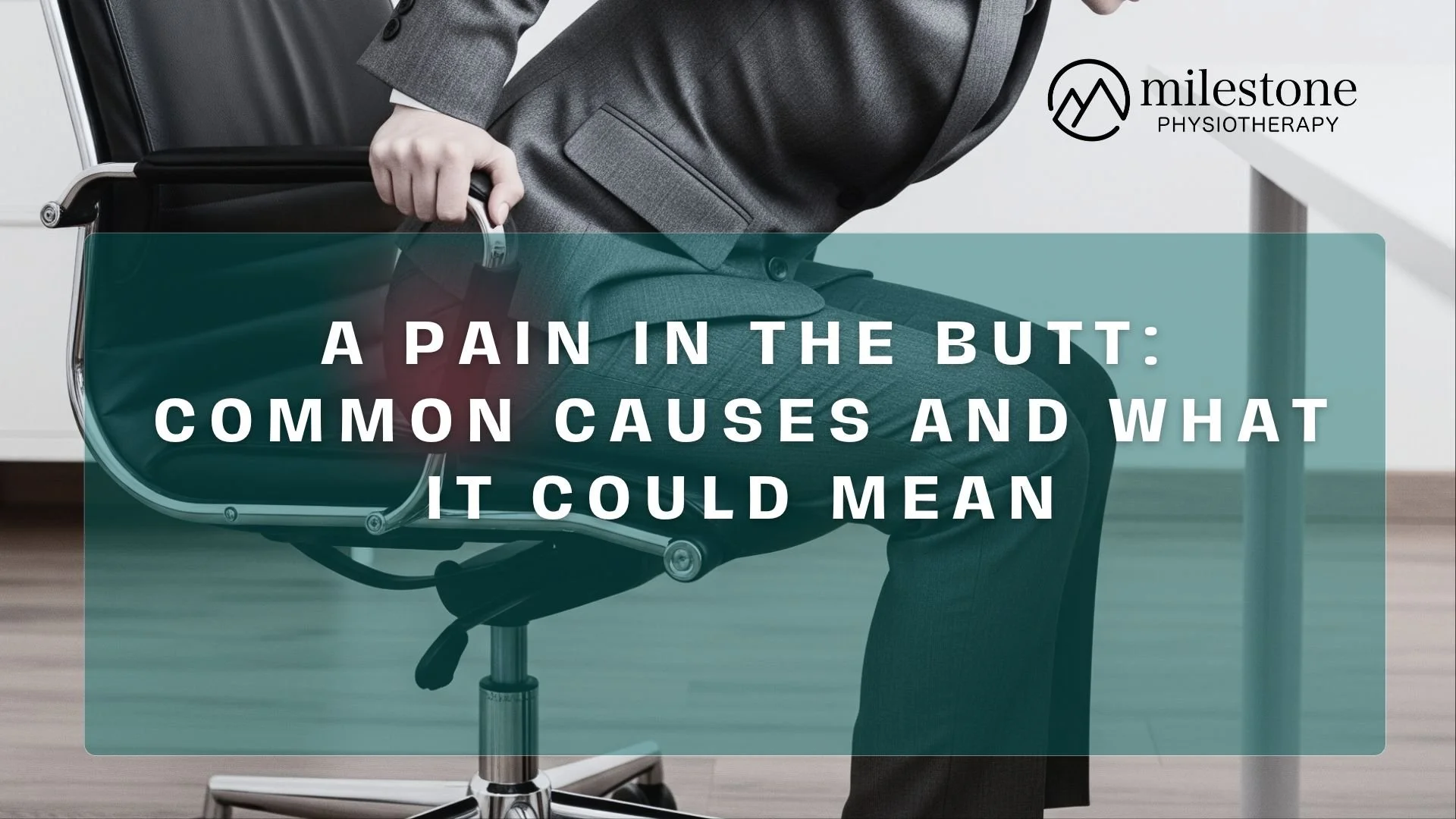
Move, Stretch, and Sleigh the Holidays: Physiotherapy Tips for a Pain-Free Christmas

A Pain in the “Butt”: Common Causes and How Physiotherapy Can Change It
Are You Dealing with Buttock Pain?
Buttock pain can be more than just a nuisance—it may point to underlying issues involving your muscles, nerves, or joints. Whether you’re a desk-bound professional, an athlete, or simply spending too much time seated, this pain can disrupt your daily life and movement.
The causes can range from muscle strains to nerve irritation, such as sciatica. Left untreated, even mild discomfort can worsen over time, making it harder to sit, walk, or sleep comfortably.
Common causes include:
Piriformis syndrome
Hamstring tendon injuries
Sciatic nerve irritation
Sacroiliac joint dysfunction
Gluteal muscle strain or tendinopathy
Watch for symptoms like:
Deep aching pain, tingling or numbness, discomfort while sitting or walking, and limited hip mobility.
To prevent buttock pain:
Keep good posture, avoid sitting too long, warm up before exercise, and stretch consistently. Strengthening your core and hips can also help reduce pressure on the buttock area.
If buttock pain is getting in your way, Milestone Physiotherapy is ready to support you. Our experienced physiotherapists will assess your condition, find the root cause, and tailor a rehab plan to relieve your pain, improve movement, and keep it from coming back.
Book your session today and take the first step towards lasting relief and better movement.

Andrew’s Thoughts & Reflections on his Padel Journey in Singapore: How I use My Own Physiotherapy Tips to Elevate My Game
Blending clinical insight with padel on-court experience, our physiotherapist shares how smart preparation, strength training, and recovery can elevate your game while keeping injuries at bay. Padel demands quick reflexes, explosive movements, and lateral agility — and without the right warm-up, conditioning, and recovery, the risk of ankle sprains, knee strain, shoulder fatigue, or even back pain increases.
From dynamic warm-ups that prime your hips, ankles, and shoulders, to building rotational strength for powerful yet controlled swings, and mastering footwork drills to move efficiently across the court — these physio-backed strategiesare designed to keep you agile, strong, and pain-free. Add in targeted shoulder care and the often-overlooked art of recovery, and you have a blueprint not just for preventing injuries, but for playing your best game for years to come.
Whether you are a weekend warrior, just discovering padel, or a seasoned player in Singapore, these tips bring together the science of physiotherapy with the passion of play — so you can keep moving well, match after match.

